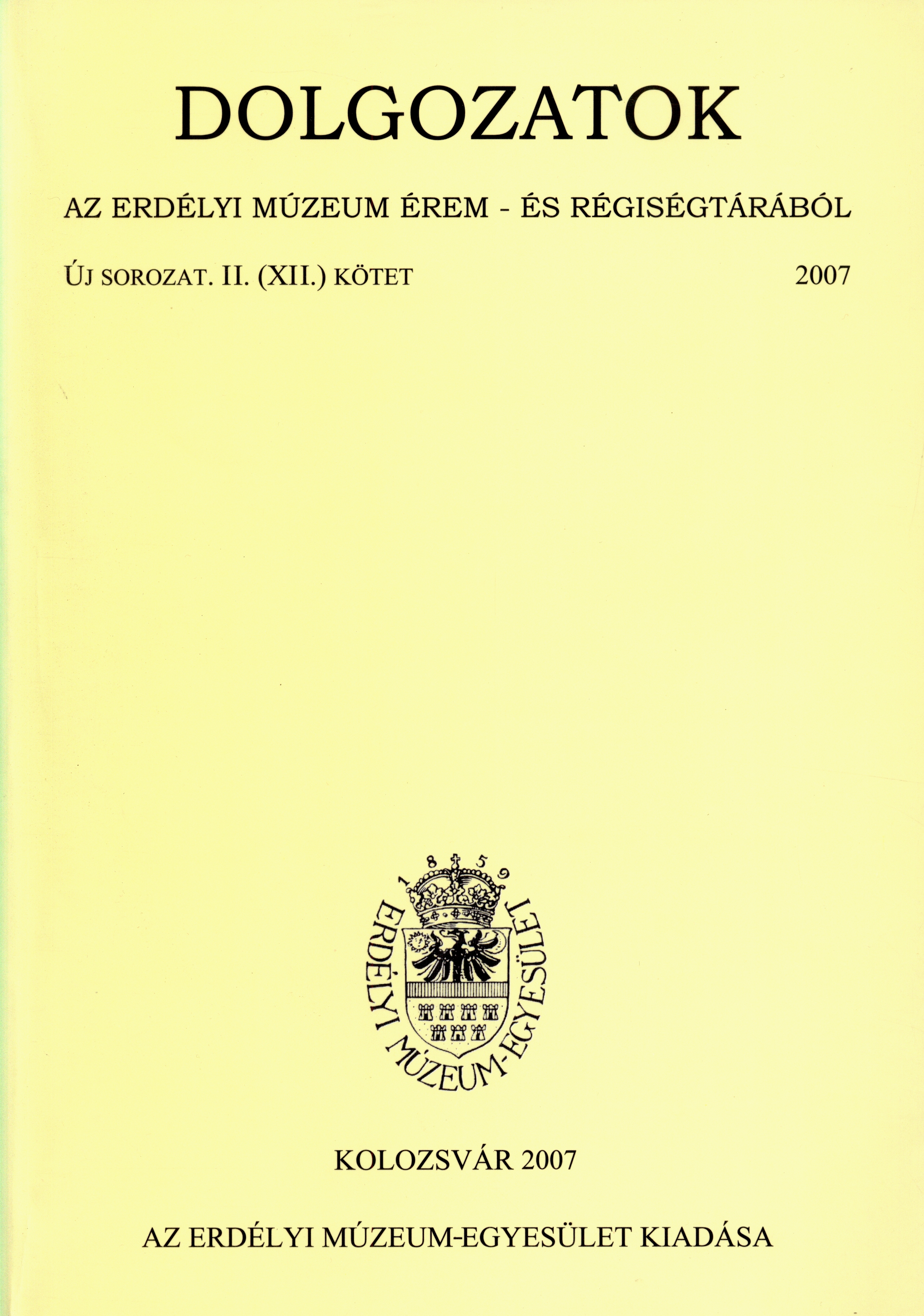Kutatástörténeti és terepbejárási adatok Szék község (Sic, Kolozs megye) régészeti topográfiájához
Data on the Archaeological Researches in the Village of Szék (Sic, Cluj County, Romania)
Author(s): Csilla FarkasSubject(s): Archaeology, Cultural history, Ancient World
Published by: Erdélyi Múzeum-Egyesület
Keywords: archaeological research; Szék
Summary/Abstract: Szék (Sic) village is situated in Cluj county, north-east from Kolozsvár (Cluj-Napoca), in the valley of the Kisszamos river, which is a part of the Mezőség (Plate 1). Its salt mines played a great part in the human settlement. The archaeological finds from the village are known since the 19th century. One of the oldest occurrence is the Vice-kút (spring-water) settlement (Plate 1/1). This settlement is located on a smaller hillock in the Bistriţa valley, north-east from Sic village. Coţofeni and Wietenberg culture and some medieval pottery were excavated here (Plate 2-3.). The valley of Szelecs is located at the confines of Forrószeg, south-east from Sic. On the northern side of the Szelecs-brook, there is another settlement, near to the lower-running terrace of Zsoldos-kút spring. (Plate 1/3). We can find more cultures' signs here, from the prehistoric ages to the 6th century (Plate 4). Also in the Szelecs-valley, 400 meters from the deep valley, on the north-side of the brook, there is another settlement on a lower terrace (Plate 1/2). The settlement is estimated to the 5th century (on the basis of the pottery) (Plate 5). At the end of the Szelecs-valley, called high-valley, there is an absolutely freestanding longish hill, called Kerekdomb (Round-hill) (Plate 1/4). The surrounding hills are standing above the aforementioned small hilltop with uncertain- natural or artificial - origin. There is a hill, called Várdomb (Castle hill) in the village (Plate 1/5). A destroyed part of a castle, called Zsidóvár, is mentioned in a donation in 1681.. After the description, it's similar with today's Várdomb (Castle hill). There's no trace of the formerly found castle-part today. This information/study is only a small contribution to the rich and varied history of the Mezőség.
Journal: Dolgozatok az Erdélyi Múzeum Érem- és Régiségtárából. Új sorozat
- Issue Year: 2007
- Issue No: II
- Page Range: 97-103
- Page Count: 7
- Language: Hungarian

